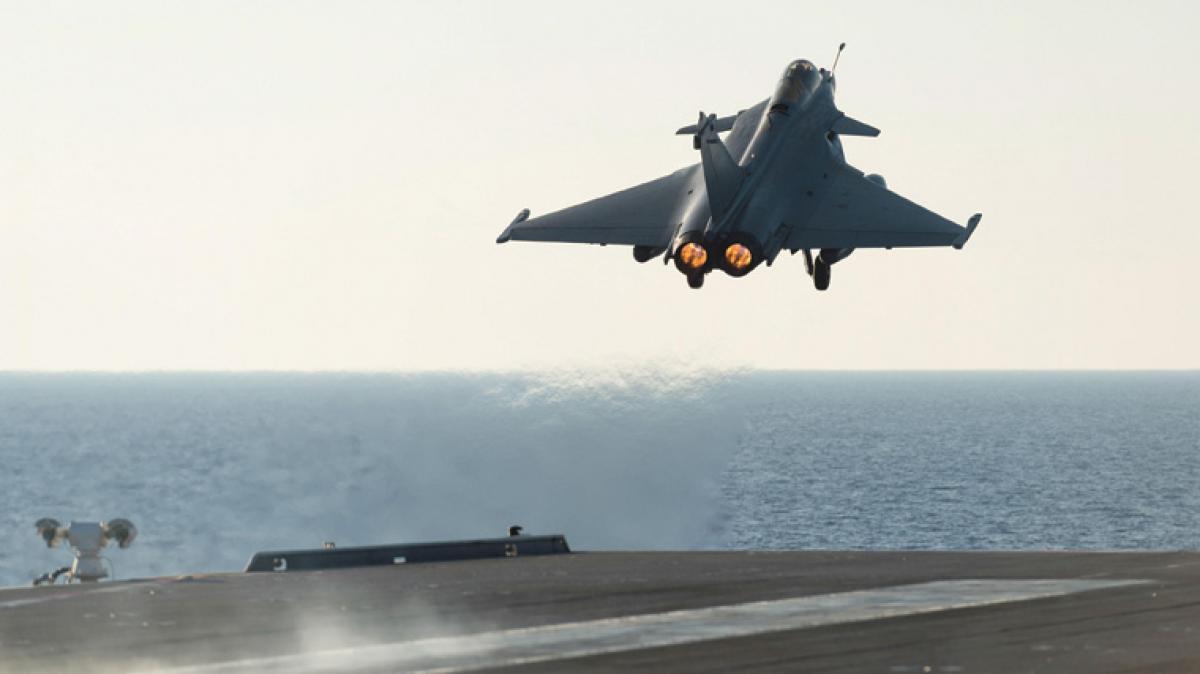On the night of 13 November, France suffered its worst terrorist attack since World War II. Less than a week later, the French navy’s nuclear-powered aircraft carrier Charles de Gaulle sailed from her home port in Toulon to the Middle East, seeking destruction of the Islamic State terrorist organization. By 23 November the carrier, whose air wing included 18 advanced Rafale Maritime strike fighters and 8 older Super Étendard attack jets, had commenced bombing and intelligence-collection operations against ISIS, joining other land-based French aircraft and U.S.-led coalition assets already fighting in the region. Along with her escorting French warships, the British Type 45 destroyer HMS Defender deployed alongside, helping to provide air defense for the Charles de Gaulle. On 4 December French President Francois Hollande visited the 40,000-ton ship off the coast of Syria to emphasize her importance in the fight against terrorism.
This past fall Saudi Arabia announced its intentions to acquire four new multi-mission surface combatants (MMSCs) that will be based on the U.S. Navy’s Freedom-class littoral combat ship. The deal was recently approved by the U.S. State Department and has an estimated price tag of $11.25 billion. Although based on the USS Freedom (LCS-1), pictured here, the MMSCs will not include the same degree of modularity inherent in the original Freedom-class design, but will instead be far more heavily armed than their U.S. counterparts. The new high-end Saudi warships will carry eight canister-launched Harpoon Block II surface-to-surface missiles, a SeaRAM antiship-missile defense system, a 16-cell VLS system for Evolved Sea Sparrow surface-to-air missiles, and a 76-mm gun. MMSC electronics are expected to include the COMBATSS-21 combat-management system, a TRS-4D C-band radar, and a compact low-frequency active/passive variable-depth sonar. A contract to build the four warships is expected to be signed early this year.
On 23 November the United Kingdom published its new National Security Strategy along with results from its five-year Strategic Defence and Security Review. Acquisition of new Type 26 frigates (pictured here as a computer rendering) will be reduced from 13 to 8, but these will now be supplemented by a new class of at least 5 lower-end warships with increased potential for the export market. Three new logistics ships and four previously announced tankers are also planned along with new offshore patrol vessels. Work on the Vanguard SSBN replacement submarine will continue in earnest despite rising costs. The naval air arm and Royal Air Force will regain its fixed-wing carrier-based fighter-attack capability by acquiring a total of 138 F-35B Lightning II stealth jets for operation fromland bases and the two Queen Elizabeth–class aircraft carriers now being built. Nine P-8 Poseidon land-based maritime-patrol aircraft are now also planned to replace the canceled Nimrod MRA4, with both the F-35 and P-8s expected in service by the early 2020s.
Mr. Wertheim, a defense consultant in the Washington, D.C., area, is the author of the 16th edition of The Naval Institute Guide to Combat Fleets of the World, available from the Naval Institute Press (see www.usni.org).




